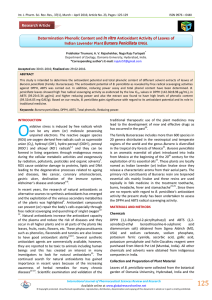Red-fleshed apples: old autochthonous fruits as a novel source of
advertisement
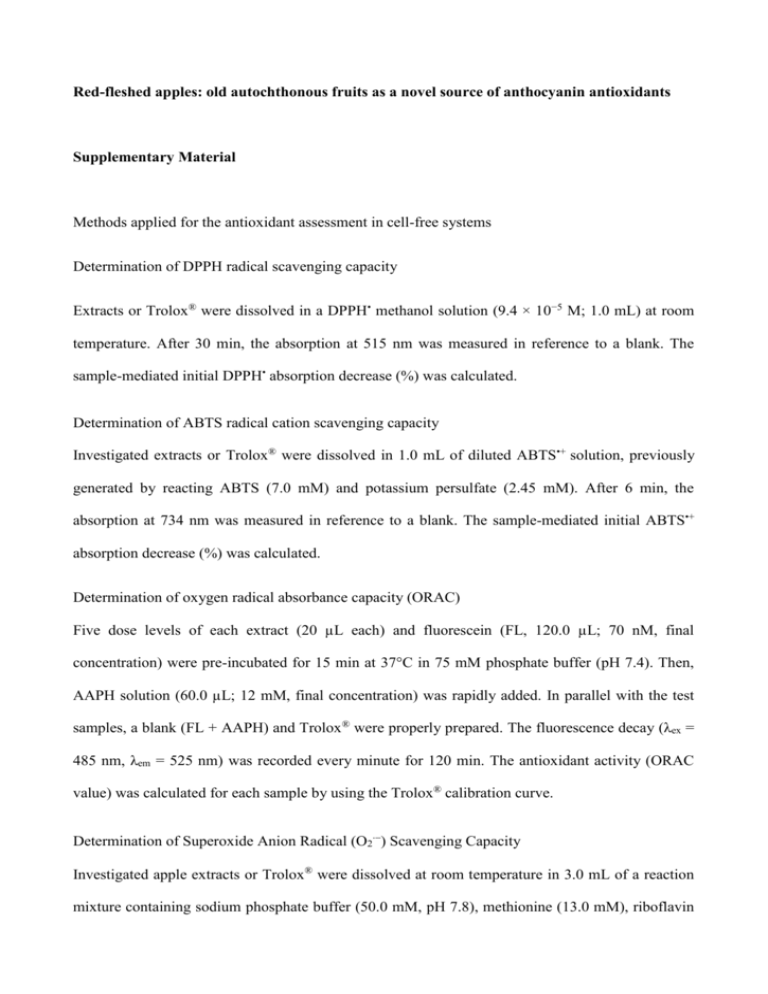
Red-fleshed apples: old autochthonous fruits as a novel source of anthocyanin antioxidants Supplementary Material Methods applied for the antioxidant assessment in cell-free systems Determination of DPPH radical scavenging capacity Extracts or Trolox® were dissolved in a DPPH• methanol solution (9.4 × 10−5 M; 1.0 mL) at room temperature. After 30 min, the absorption at 515 nm was measured in reference to a blank. The sample-mediated initial DPPH• absorption decrease (%) was calculated. Determination of ABTS radical cation scavenging capacity Investigated extracts or Trolox® were dissolved in 1.0 mL of diluted ABTS•+ solution, previously generated by reacting ABTS (7.0 mM) and potassium persulfate (2.45 mM). After 6 min, the absorption at 734 nm was measured in reference to a blank. The sample-mediated initial ABTS•+ absorption decrease (%) was calculated. Determination of oxygen radical absorbance capacity (ORAC) Five dose levels of each extract (20 µL each) and fluorescein (FL, 120.0 µL; 70 nM, final concentration) were pre-incubated for 15 min at 37°C in 75 mM phosphate buffer (pH 7.4). Then, AAPH solution (60.0 µL; 12 mM, final concentration) was rapidly added. In parallel with the test samples, a blank (FL + AAPH) and Trolox® were properly prepared. The fluorescence decay (λex = 485 nm, λem = 525 nm) was recorded every minute for 120 min. The antioxidant activity (ORAC value) was calculated for each sample by using the Trolox® calibration curve. Determination of Superoxide Anion Radical (O2) Scavenging Capacity Investigated apple extracts or Trolox® were dissolved at room temperature in 3.0 mL of a reaction mixture containing sodium phosphate buffer (50.0 mM, pH 7.8), methionine (13.0 mM), riboflavin (2.0 M), EDTA (100.0 M) and NBT (75.0 M). The O2 production was followed by monitoring the increase in absorbance at 560 nm after 10 min illumination with a fluorescent lamp. Determination of Hydroxyl Radical (OH) Scavenging Capacity To the reagent mixture (H2O2 (100.0 µM), EDTA (100.0 µM), FeCl3 (100.0 µM), and ascorbic acid (100.0 µM) in KH2PO4/KOH buffer (10 mM, pH 7.4)), previously incubated at 37 °C for 1 h, 2deoxyribose (28.0 mM) was added and allowed to stand at 37 °C for 5 min. Thus, 1.0 mL of diluted reagent mixture was added into tubes containing test samples or Trolox® and incubated at 37 °C for 1 h. To each tube 1.0 mL of a 1.0% TBA (thiobarbituric acid) in 50 mM NaOH and 1.0 mL of a solution at 2.8% of TCA (trichloroacetic acid) were added and placed in a water bath at 90°C for 30 min, before reading at 532 nm.
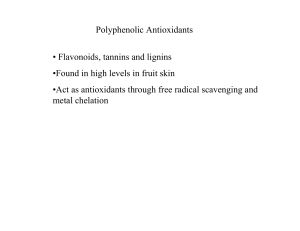
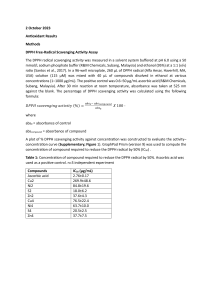


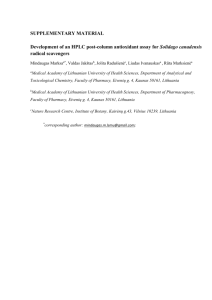
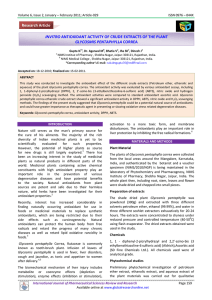
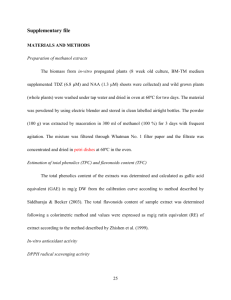


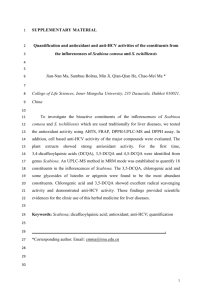
![benzo[d] isoxazole: In vitro Antimicrobial and Antioxidant activity](http://s3.studylib.net/store/data/007006684_1-684f7b1d721ca4abfe74cc96e54598b2-300x300.png)
